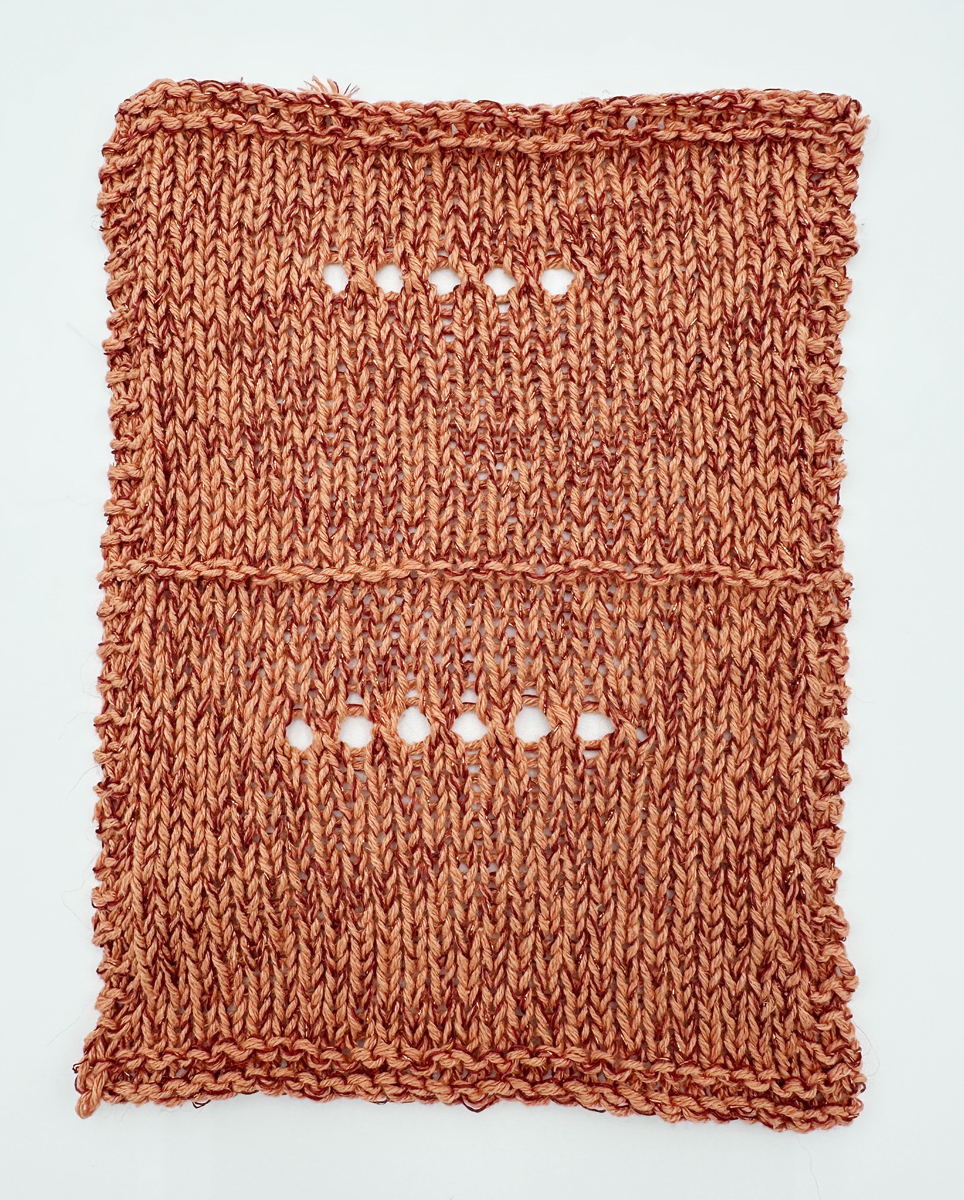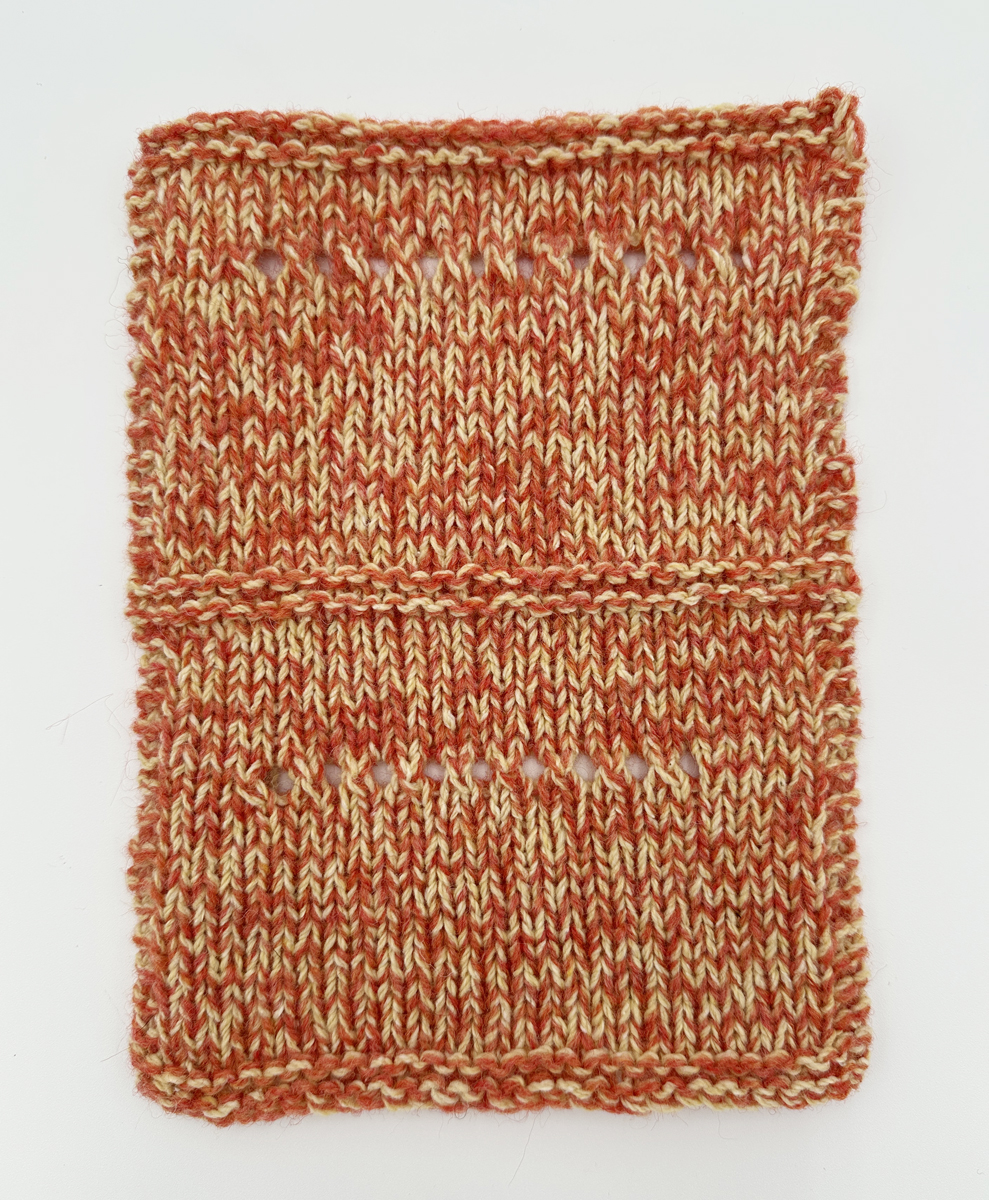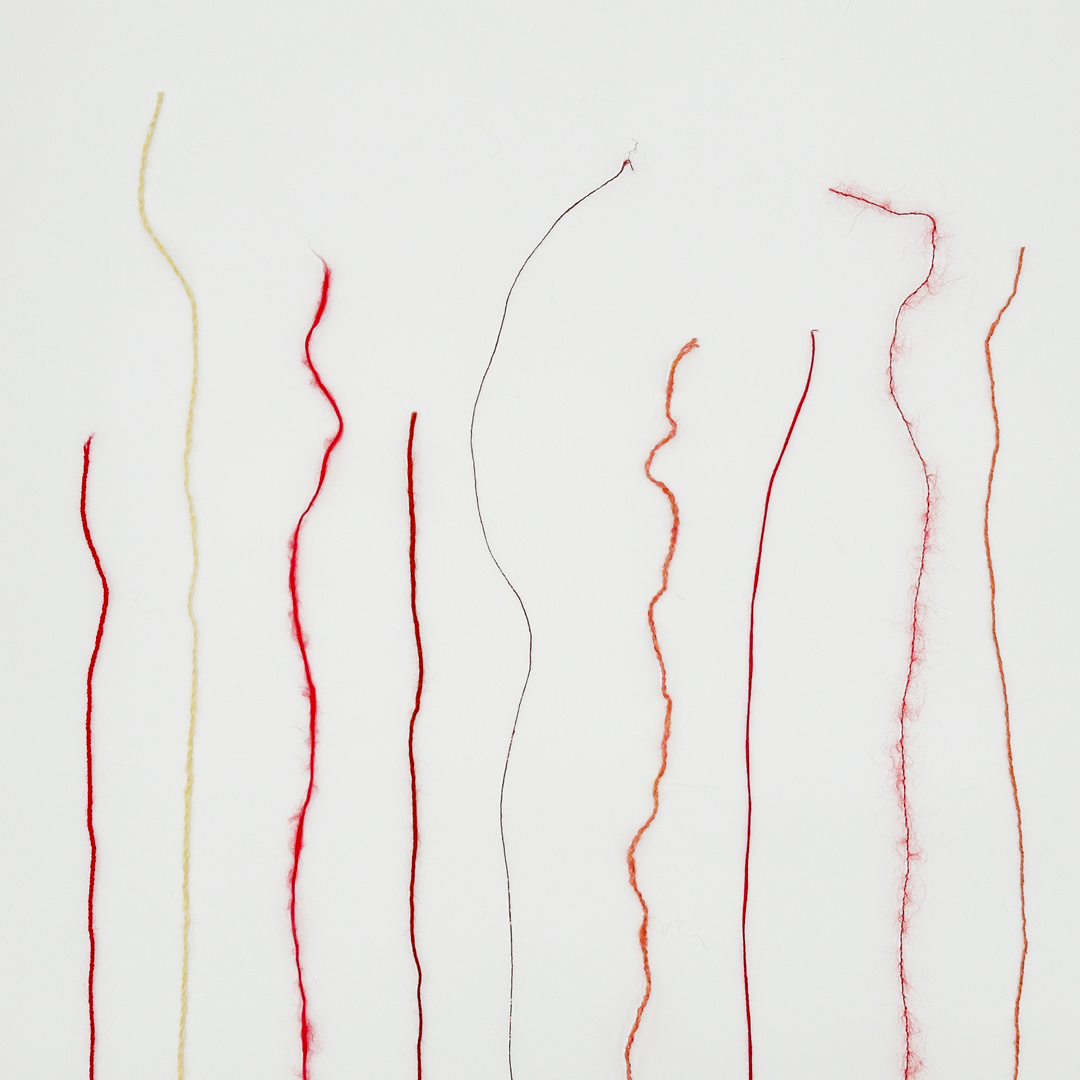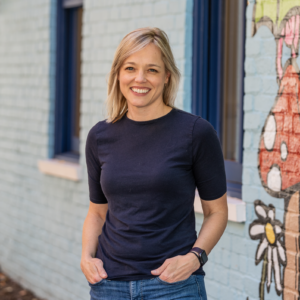Lately, we’ve been having fun making our own yarns–and not just through spinning! We’ve been playing around with fibre and color combinations with multiple yarns, including some of our new spring arrivals. Mixing fibres, textures, and colors offers you have endless new yarn textures and colors to work with, and experimenting with needle sizes means you can change things like drape and density. Plus, you can get that exact mix of colors you’re dreaming of, or the perfect texture for your new favorite top. We have some great swatches from our friend Olga Buraya-Kefelian to showcase unique combinations, and to inspire your own!
Pascuali Suave, Pascuali Arctic Pearl, and Knitting for Olive Soft Silk Mohair

This swatch was knit with one strand each of Pascuali Suave (fingering weight, 100% Organic Cotton), Pascuali Arctic Pearl (fingering weight, 100% Lyocell/SeaCell), and Knitting for Olive Soft Silk Mohair (laceweight, 70 %mohair and 30% silk). The top half of the swatch was knit on US#11 needles; the bottom half was knit on US#10s. The multiple shades of red offer depth and texture. Suave offers the soft fuzzy cotton feeling, while Arctic Pearl create sheen and structure; then, the Soft Silk Mohair adds both Mohair’s signature “halo” as well as a little bit of additional durability thanks to the silk. And, you can see the difference needle sizes makes, depending on the look you prefer: the smaller needles create a more dense swatch, while the top half allows a slightly looser, more drapey fabric.
Knitting for Olive Pure Silk and Kremke Stellaris

This swatch was knit using one strand of Knitting for Olive Pure Silk (fingering weight, 100% pure raw silk) and one strand of Kremke Stellaris (laceweight, 47% viscose, 41% polyester, 12% metal fibre). The top half was stitched on US#5 needles; the bottom on US#6 needles. The Stellaris adds sparkle as well as an additional deeper red shade to the coral Pure Silk, and the Stellaris adds a little Mohair-like “halo” to the silk.
Wooldreamers Saona and Jamieson’s of Shetland Spindrift

Here, we have a single strand of Wooldreamers Saona (fingering weight, 50% Merina Entrefina and Manchega Traceable Wool and 50% Andalusian Cotton) and a single strand of Jamieson’s of Shetland Spindrift (fingering weight, 100% Shetland Wool). The swatch was knit on US#9 needles, then on US#10 needles. The two colors and different combinations of fibres create a vibrant fabric with wonderful texture and an effortless mix of colors. The smaller needles create a more uniform color texture. The portion knit on larger needles allows the hues of both strands, as well as the different textures of the fibres to mix organically.
A note on weight and gauges
As you can see from the swatches above, weight and needle size can vary widely, depending on the effect you prefer! When combining multiple yarns, you’ll need to assess what weight your new “yarn” is, as well as test needle or hook sizes to obtain a specific gauge. For example, if you’d like a worsted weight yarn, you could combine two colors of fingering weight yarn, or a DK and a laceweight yarn.
You can also look at wraps per inch (WPI) to judge what weight of yarn you will have if you hold multiple strands together. You can count the multiple strands as “one” wrap. For example, if you’re holding a DK weight and laceweight yarn together, you’ll likely have about 9 WPI, which is the same WPI as a worsted weight yarn. Of course, as always, swatch to see how your individual tension and needles affect your unique combinations of fibres and weights.

While some stitchers are pros at adding a strand of Mohair yarn to their main skein, it can be a little daunting at first to knit or crochet using two strands (or more!) at once. The key is to experiment and practice! You’ll be surprised with the beautiful, unique combinations you’ll create. We promise you can get the hang of it!
Want to learn more? Subscribe to our newsletter so you’re the first to know about the Make Your Own Yarn workshop we’ll host later this spring!


